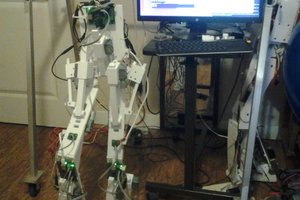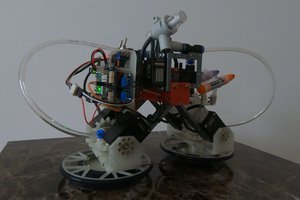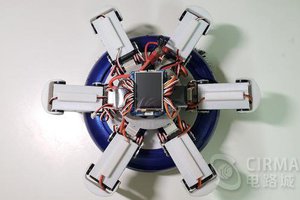OVERVIEW
The human hand, with its 27 degrees of freedom, is one of the most versatile tools ever created. The hand with its 5 digits can adapt to an infinite number of forms and perform a myriad of activities. Its safe to say getting anything mechanically close to a human hand is as difficult as achieving walking robots. Though robots aren't as adaptable, a robot is efficient at specific tasks. A human wrist will never be able to rotate as fast as a rotary tool, that's why we have drills. A robot tool changer gives your robot the ability to change end effectors to adapt to different functions just like the human hand.
HOW IT WORKS
The picstack is a three part system which consists of
- The Stack
- Picend modules
- Pictool Adapter
The Stack
The stack is the main body that holds the picends modules. When the robot arm needs to change the end effector the stack moves the appropriate picend with tool attached to align with the pictool for attachment for attachment to the robot arm.
Pecend
The picend is the base unit for all end effectors used in the picstack. It attaches to the pictool. Picends either have no power or are powered with servo and motor control output for actuated end effectors.
Pictool Adapter
The pictool is an adapter permanently attached to the robot arm which houses the mechanism to attach to the picends. When the robot arm needs to changeend effector it rests the pictool and attached picend in the tool dock on the stack and the stack moves the new tool in place.
 Kasey Thomas
Kasey Thomas
 Ted Huntington
Ted Huntington
 tab
tab
 Mykolas Juraitis
Mykolas Juraitis
 Cirmall
Cirmall